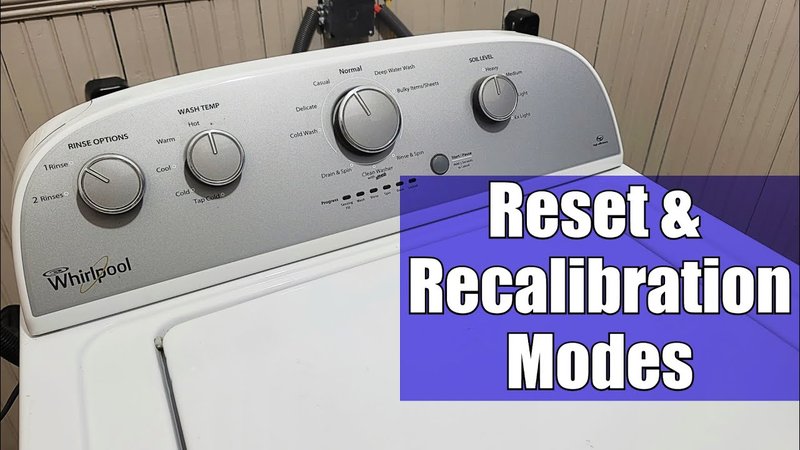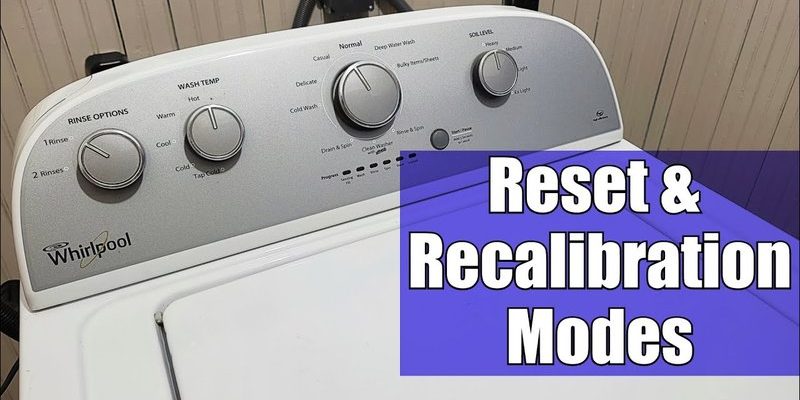
Error codes on appliances like washing machines are a bit like a car’s check engine light. They signal that something isn’t quite right inside, and it’s time to take action. Specifically, the E1 code on a Whirlpool machine often indicates a problem with water level detection. It’s as if your washing machine is trying to tell you, “Hey, I might have a clogged drain hose or faulty sensor!” But here’s the good news: with a little patience and some straightforward steps, you can address this issue without needing to be a professional tech wizard.
Understanding the E1 Error Code
Before we jump into how to fix it, let’s take a moment to understand what the E1 error code is trying to communicate. Think of it as your washing machine’s way of waving a red flag to get your attention. Normally, this error code pops up when there’s an issue with the water inlet. Imagine trying to fill a bathtub with a spoon—that’s how your washing machine feels when it’s struggling with water flow issues.
The E1 code typically suggests that the machine is either not getting enough water or not able to detect it properly. This could be due to a blocked water inlet valve, a kinked hose, or even a malfunctioning sensor. It’s as if the machine is saying, “I can’t start my cycle if I don’t have the right amount of water!” Understanding this is key because it sets the stage for resolving the issue.
Now, why does this happen? Well, over time, hoses can become clogged with mineral deposits, especially if you live in an area with hard water. It’s like a clogged artery that needs a good flush. Meanwhile, sensors might just wear out or need resetting. So, the first step in any troubleshooting process is to identify the source of the problem gently and without jumping to conclusions.
Steps to Reset Your Whirlpool Washing Machine
So, what should you do when confronted with an E1 error code? Rest assured, the process to reset your Whirlpool washing machine is straightforward. It’s akin to rebooting your smartphone when it’s acting up. Here’s a simple guide to help you out.
First, start by turning off your washing machine and unplugging it from the wall socket. This is like giving your computer a fresh restart. Wait for a couple of minutes—let’s say two to three—before plugging it back in. This allows any residual power to dissipate, effectively “resetting” the machine’s brain.
Next, check the water inlet hoses to make sure they’re not kinked or clogged. This couple of minutes of inspection can be likened to checking if your car tires have enough air. Ensure that the hoses are securely connected and open the valves fully. Turn the machine back on, and select the rinse cycle to see if water is entering properly. If it is, congratulations—you’ve likely resolved the issue!
However, if the E1 error persists, it might be necessary to inspect the water inlet valve itself. This is usually located at the back of the machine. You’re looking to ensure that it isn’t blocked with debris, preventing water from flowing into the machine. Cleaning or replacing this part may be required, and it’s wise to consult the user manual or reach out to Whirlpool for specific instructions.
Preventing Future E1 Errors
Now that you’ve tackled the E1 error, let’s chat about how you can prevent it from coming back like an unwanted guest. Think of these tips as putting a security system in place—once you know the common culprits, you can take steps to avoid them.
One effective strategy is to periodically check and clean your water inlet filters. These filters act as the first line of defense against debris. By keeping them clear, you’re ensuring that water flows smoothly into your machine. Imagine them as tiny sieves that trap unwanted particles—keeping them clean means avoiding blockages.
Another tip is to schedule regular maintenance checks for your washing machine. Much like you’d give your car a regular oil change, ensuring parts are working correctly can stop issues before they start. This could mean checking hoses for wear and tear or ensuring sensors are functioning well.
Finally, consider using water softeners if you’re in an area with hard water. Over time, mineral deposits can build up and cause issues. Using a water softener is like having a gentle exfoliant for your appliances, keeping them clear and efficient.
When to Call in a Professional
Sometimes, despite our best efforts, an E1 error might just be too stubborn. In these cases, calling a professional can save you time and a headache. It’s like calling an expert when your DIY fix doesn’t cut it.
If you’ve tried all the resets and checks and still get an error, it might be an internal problem that needs a professional touch. Perhaps there’s a faulty sensor or a more complex electrical issue that needs diagnosing. It’s nothing to be embarrassed about—think of it as using the right tool for the job.
Professionals have the skills and tools to quickly pinpoint and resolve these issues. And while you might pay a bit upfront, it often saves money in the long run by extending the life of your appliance. Don’t hesitate to reach out to Whirlpool’s customer service or a trusted local repair service if things get too tricky.
In the end, maintaining your washing machine with these tips keeps everything running smoothly and prevents those inconvenient interruptions. Resets and regular checks are simple measures that make a big difference. Keep that laundry flowing and your machine happy!
